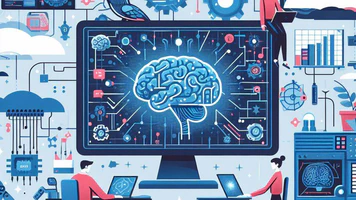
- By Justin Riddiough
- December 8, 2023
Current Challenges in Neuromorphic Computing
As we navigate the frontiers of neuromorphic computing, it becomes imperative to address the challenges that currently shape its landscape.
Overcoming these challenges is essential to unlocking the full potential of neuromorphic systems and integrating them seamlessly into various applications.
Discuss Challenges
Challenges in neuromorphic computing encompass several key areas:
-
Scalability: Achieving scalability in neuromorphic systems poses a significant challenge, especially as the complexity of models increases. Adapting neural networks to handle larger datasets and more intricate tasks requires innovative solutions.
-
Robustness: Ensuring the robustness of neuromorphic models is crucial for real-world applications. The systems must demonstrate consistent and reliable performance across diverse scenarios, overcoming variations and uncertainties.
-
Complex Task Adaptation: Neuromorphic systems face challenges in adapting to complex tasks that demand multifaceted cognitive functions. Developing models capable of handling a wide range of tasks remains a formidable task.
Exploring Future Developments
Peering into the future of neuromorphic computing unveils exciting prospects and ongoing research areas that promise to shape the trajectory of this evolving field.
The exploration of future developments opens doors to transformative advancements, pushing the boundaries of what neuromorphic systems can achieve.
Explore Potential Advancements
Future developments in neuromorphic computing encompass various avenues:
-
Neuromorphic Hardware Innovation: Anticipate advancements in neuromorphic hardware, including the development of more energy-efficient chips, novel memory architectures, and hardware designs inspired by the intricacies of the brain.
-
Algorithmic Breakthroughs: Ongoing research focuses on refining and innovating neuromorphic algorithms. Expect breakthroughs in algorithms that enhance learning capabilities, adaptability, and the overall performance of neuromorphic systems.
-
Interdisciplinary Collaborations: The future of neuromorphic computing involves interdisciplinary collaborations, bringing together experts from neuroscience, computer science, materials science, and other fields. This collaborative approach is poised to accelerate advancements and address complex challenges.
In conclusion, the exploration of challenges and future directions in neuromorphic computing illuminates both the hurdles to overcome and the promising horizons that await. As researchers and practitioners converge on innovative solutions, neuromorphic computing stands at the cusp of transformative developments that could redefine the landscape of intelligent computing.


